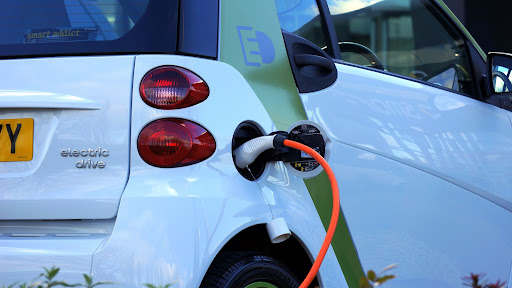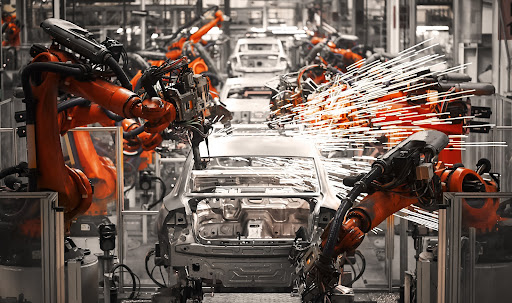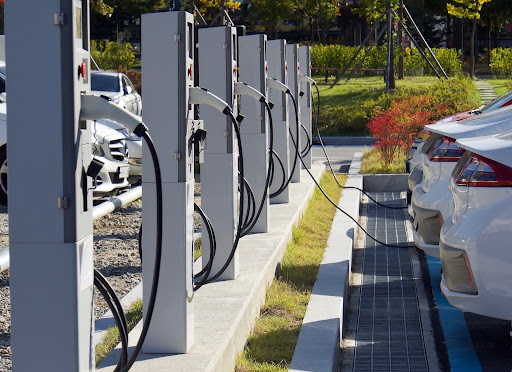
The EV conversation is one that is increasingly hard to ignore.
Certainly over the last five years, it has gained a lot of traction – as shown below by a Google Trends search completed at the beginning of August 2022.

As the race to become Net Zero intensifies, that demand is only going to increase with the use of aluminium in EV, especially as we edge closer to the UK Government’s goal of ceasing trading of new petrol and diesel vehicles by 2030 – a pledge put down only in 2020.
However, this shift to EV is not isolated to the UK. It’s global. With every country around the world jostling for the same supplies and materials in order to facilitate this ambitious sustainability-led move.
Projections show that global sales of electric passenger vehicles are projected to surpass 10.5 million, exceeding 2021 levels by about 4 million. By 2030, electric vehicles are also expected to occupy 40% of global sales of new cars.
The EV market will be a dictator of resources and will be prioritised on demand alone due to the use of aluminium in electric vehicles. That demand – understandable as it is – is also part of the reason we have seen inflation on prices for raw materials and shortages over the last 12 months.
Out of those raw materials, none arguably have a greater role to play in facilitating EV than that of aluminium.
Why is EV needed in the EV market?
The first thing to point out is that aluminium is in every car.
Indeed, a report released in 2016 showed that the average car has up to 612kg of aluminium on it. The majority of that sits on the body of the car.
So, in theory, why should that change anything?
The answer lies in the weight of the car and the ongoing challenge for EV to hit a range capability similar to that of petrol or diesel vehicles, which are capable of lasting more than 400 miles on a full tank.
As of 2021, a fully charged electric vehicle struggles to surpass even 300 miles.
Part of the maths around improving that figure centres on how the industry can make the vehicles lighter. It’s no secret that the heavier a vehicle is the quicker the battery is going to be drained. A standard petrol vehicle currently weighs over 1,800kg on average, but with EV vehicles, that figure is currently over 1,950kg.
The way aluminium is used in electric vehicles is going to be essential to bringing that figure down in the coming years. Developers are already striving to make cars that are made up of 80% aluminium, following the same path as the aviation industry, and are looking at the role it plays beyond just the chassis.

Aluminium is also feeding the growth of future EV infrastructure
While a lot of investment is being made in new vehicles, a great deal is also being ploughed into necessary infrastructure in order to make the switch to EV possible.
Namely, these are the EV chargepoints that we are starting to see pop up more and more.
These chargepoints have got to be sturdy pieces of kit that aren’t going to be vandalised, destroyed or damaged. It is easy to imagine that aluminium extrusions will be needed to make the framework of charging points.
Cast your eye forward to 20 years from now and you only have to imagine how many charging points there will be, especially after the UK Government passed a law that stated that charge points must be included as part of any major renovation project on new homes, supermarkets, or workplaces from this year.
That’s a whole lot of aluminium that is required to make a such shift viable. As mentioned earlier, the growth of EV has led to a significant increase in demand for a number of raw materials, one of which is aluminium.
It’s our opinion that will only continue to grow over the next decade.
Is the use of aluminium good for the environment
While the shift to EV is being done in the name of sustainability, there are question marks about pairing that with mass inclusion of aluminium in EV.
The reality is that prime aluminium production is extremely energy intensive. How green is an electric vehicle if it is built with large quantities of metal that took a great deal of energy and effort to produce in the first place?
Right now, the pool of EV owners is small. But it’s expanding. It’s getting larger and huge amounts of aluminium is going to be needed to make that happen.
The reality is the UK, in its current state, would not be able to sustain a nationwide switch to EV, not in the timeframe that is being suggested right now. The nation simply hasn’t got the infrastructure or power in place to be able to cope with it.

Will the price of aluminium ever return to pre-pandemic levels?
Aluminium is trading at a higher price point but it’s worth pointing out straight away that we won’t see aluminium hit the same levels as what nickel did back in March.
For context, the situation with Nickel hit beyond unprecedented levels, increasing to a price on the London Metal Exchange that had never been seen before and led to trading being ceased.
But like nickel, aluminium’s popularity has increased and, as a result, it was no surprise to see that the price of it hit a 13-year high towards the end of 2021. Unsurprisingly, that price continued to gradually climb during the first few months of 2022
There’s a few reasons for that, including:
- The growth of EV
- The construction industry is buoyant
- Russia being one of the biggest exporters of aluminium
Particularly on those first two points with the use of aluminium in EV, it is safe to say that the demand for aluminium is only going to remain strong and we don’t anticipate the price of aluminium will return to its pre-pandemic level.





